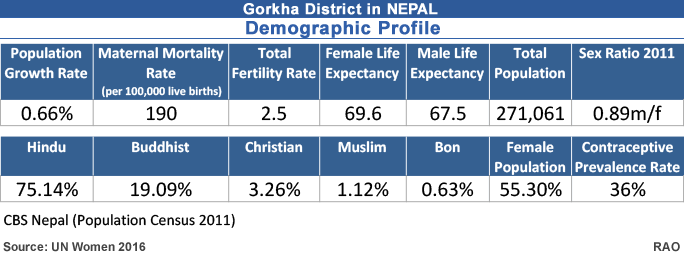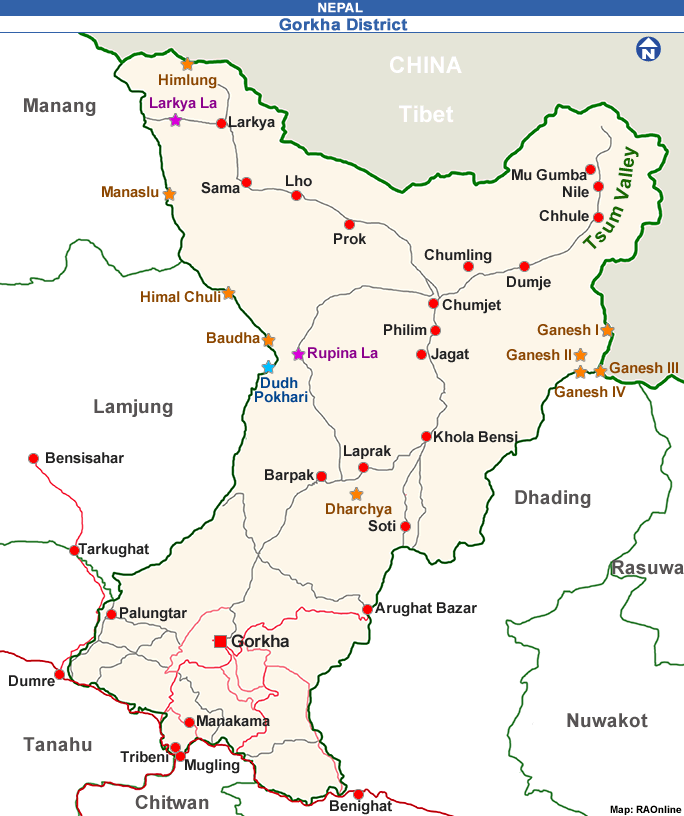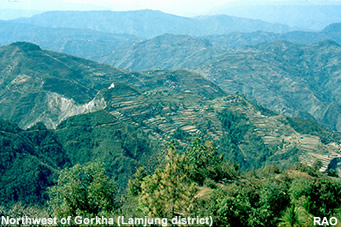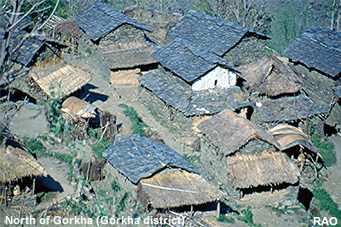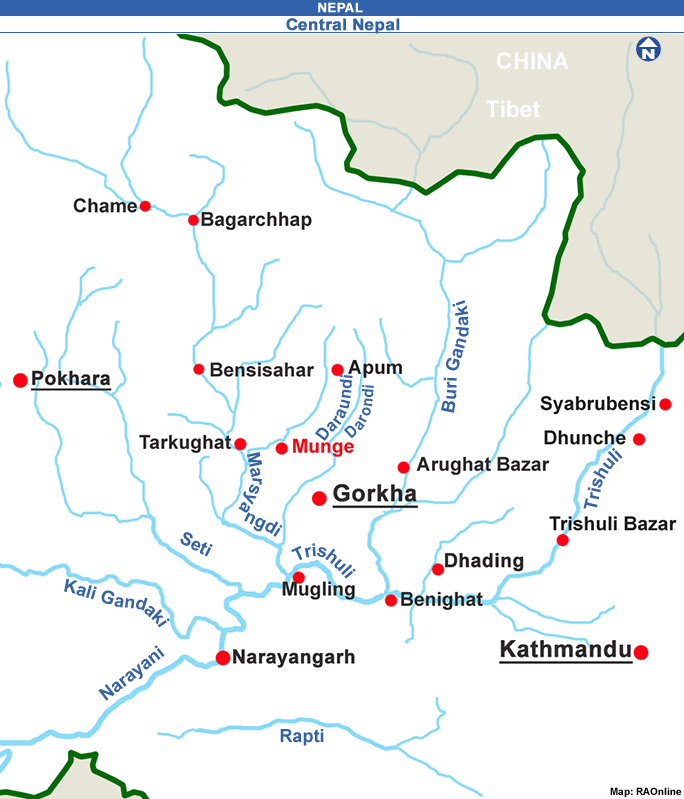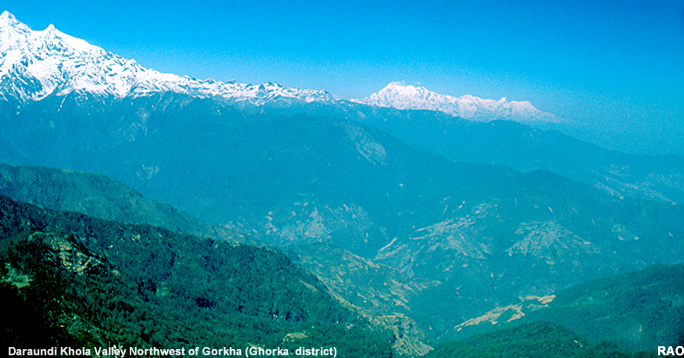 |
Nepal's
Nature Earthquakes |
|
|
 |
| April 2015: A M 7.8 earthquake struck Nepal |
| Gorkha District |
 |
1. Demographic Profile
2. Impact of Earthquake
Gorkha is located in the Gandaki Zone of the Western Development Region of Nepal, surrounded by Dhading, Tanahu, Lamjung, Manang and Chitwan districts and it touches the border of Tibet. It is the fourth largest of 75 districts in Nepal and covers an area of 3,610 square kilometers, with elevations ranging from 228 – 8'163 meters, and a varied climate.
Gorkha's total population of 271,061 people is comprised of 150,020 females and 121,041 males within a total of 66,506 households. The district is divided into three electoral constituencies, and 13 regions or Ilakas which are divided into 60 Village Development Committees (VDCs) and two Municipalities.
On 25 April 2015, a 7.8 magnitude earthquake with the epicenter located at Barpak, Gorkha, hit Nepal causing massive destruction and severe casualties. Two weeks later, another earthquake of 7.3 magnitude shook eastern Nepal.
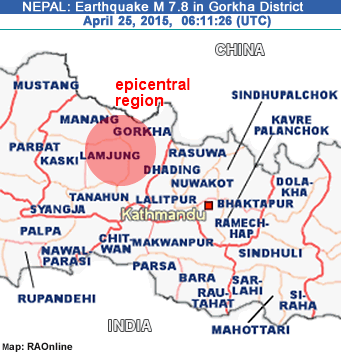 |
| According to a UNDP flash report, 5.4 million people living in 14 out of Nepal's 75 districts were severely affected. Gorkha was one of the severely affected districts with casualties including 470 deaths (233, 49.57% women), 952 injured (476, 50% women), and the complete destruction of more than 59,573 houses, 3,074 school classrooms, and 79 health posts. The development progress of the district is expected to be severely impacted by the devastating earthquake. The immediate response in the aftermath of the earthquake was primarily focused on search and rescue operations, relief support, and protection for displaced families. The DDRC, with material and financial support from the Ministry of Home Affairs, DDC, Gorkha, other district authorities, and humanitarian organizations, mobilized security forces along with equipment for search, rescue, and relief operations. |
|
The DDRC immediately mobilized nine clusters to provide lifesaving assistance including shelter, food, health/nutrition, WASH, and protection to all people affected by the disaster. Specially protected vulnerable groups (pregnant women, lactating mothers, adolescent girls, senior citizens, and people with disabilities) were provided with dignity kits and other essential support for health care, nutrition, psycho-social support, and referrals through women safe houses, women centers, and multi-purpose women's centers. More than 100 humanitarian organizations (INGOs, UN agencies, and private agencies) supported the response and early recovery in Gorkha.
3. Socio-Cultural, Political, Economic, and Security Conditions
Socio-Cultural Practices: Gorkha's population is diverse. Ethnic groups including Gurung, Magar, Newar, and Tamang represent 44% of the total population. Dalits represent 19% of the population, which corresponds with national data, and 37% of the population is made up of others.
There is some sharing of social and cultural practices between ethnic groups. Most celebrate Dashai, Tihar, and other festivals commonly, but some specific festivals are only celebrated by respective social groups. As per the socio-cultural practices among different ethnic groups, marriage plays a decisive role in all women's life choices and their social-economic status, with a woman's decision making power dependent upon their hierarchy in the family. Single women are discriminated against in Nepalese culture, particularly those who have been widowed, who are considered ill-fated and not allowed to participate in various functions of society. The practice of Chhaupadi system still exists in this district, which requires women to remain separated from the rest of society for five days during menstruation.
 |
Despite Nepal declaring the country free of Untouchability in June 2006 and also passing and implementing the Untouchability Act 2011 , the practice of untouchability has not stopped, especially in the rural areas, and it has not changed the discriminatory behavior of people toward Dalits, who lack legal identity. Most Dalit women do not have citizenship certificates and therefore cannot access land ownership, bank accounts, formal jobs, or government services. Dalits are a particularly vulnerable group who tend to be less aware of their rights, are not able to access education, and it was also reported that they were excluded from accessing the relief items during the earthquake response and early recovery.
 |
| Source: UN Women, May 2016 |
| Links |
 |
 |
 |
External Links |
|


